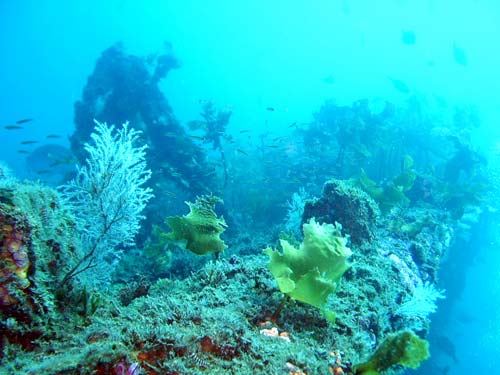 Business & Finance Club - Manama : Bahrain will be laying down 15,000 artificial reefs in the sea in an effort to rehabilitate the country's marine resources and revive its declining fishing industry.
The artificial reefs will be made of concrete and designed in pyramid and dome shapes, depending on the depth of the seabed.
The concrete structures will be spread across three main areas of the sea to the north east, south and west of the country.
The Fisheries and Marine Resources Directorate is spearheading the four-year project, which is expected to get underway by the end of the year.
Fisheries and Marine Resources director Jassim Al Qaseer said a tender would be floated within the next month.
'We have completed a survey for the area and we are now planning the financial and administration procedures for the tender,' he said.
Al Qaseer said artificial reefs would be deposited in areas of the sea not too far from the natural reef, where there was a good current and the seabed was no more than 15 metres to 20m deep.
He said the main idea behind the project was to build houses for marine life and fish where they could hide and look for food.
'We are creating a home for fish and the marine environment,' said Al Qaseer.
'It should be controlled and not destroyed by fishermen by over fishing and using harmful fishing gear.'
Al Qaseer said Bahrain's reefs, the marine environment and fish population had suffered due to a combination of dredging and reclamation, overfishing, the use of harmful fishing gear and natural causes.
'It will take years before the artificial reef becomes settled but fish will come in this area and where there are small fish there will be big fish and this is a way of rehabilitating fish stocks,' he said.
'We will deposit about 15,000 reefs - about 5,000 in each area.
'We won't just depend on natural fish, we will release those we have bred in our hatcheries.'
Al Qaseer said the cost of the project had not been finalised, but the main expense would be for mobilising the artificial reefs and diving because the concrete material was not expensive.
'We did this before in Bahrain and got good results and we are hoping this project will also be successful,' he said.
'Our first project was in 1982, it was on a small profile using different materials.'
Al Qaseer said the success rate of the project will depend on the sea current, the depth of the seabed and fishermen keeping away from the artificial reef sites.
'We are looking forward to having this project,' he said.
'Artificial reefs will attract marine life because they go where it is most safe and where they can feed, if we have both in one place the area will become populated.
'It will be a hiding and feeding ground because it will attract sea grass and algae and fish can also hide in the shape.
'Any material you hang in the sea will eventually have sea grass and algae growing on it.' |